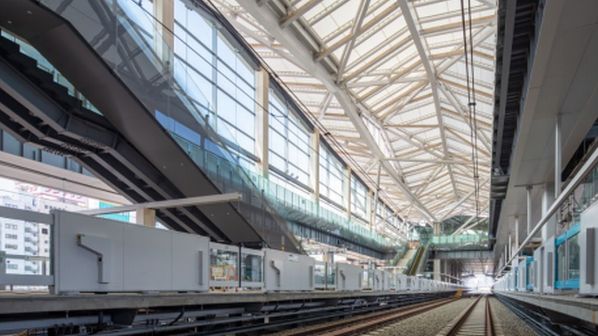The multi-level station has two island platforms, one for Yamanote Line trains and the other for Keihin Tohoku Line services. Takanawa Gateway is expected to handle 23,000 passengers per day, rising to 123,000 by 2024.
The station was designed by the architect Mr Kengo Kuma and has a large glass roof reminiscent of a shoji with origami motifs. The new station is located on the site of a former depot and is where the first railway opened in Japan in 1905.
Takanawa Gateway has several environmentally friendly features including solar panels, small wind power generators, LED lighting and extensive use of local materials. There is also an 80m2 wall between the station and the road to reduce noise and a 70m2 green space beside the Yamanote Line tracks.
Technical innovations
The new station will have several technical innovations including robots to provide passenger information and guidance, security to detect suspicious objects, cleaning and advertising. JR East will test a public address system which will automatically adjust the volume according to the ambient noise.
JR East will trial the introduction of automatic tickets using QR codes to monitor the use of the gates. Liquid crystal displays above the ticket vending machines will show a map-based fare table.
The station will have an unmanned “Touch and Go” shop, which uses AI to deduct payments from shoppers as they select products from the shelves.
JR East is collaborating with Japan Airlines to demonstrate the latest technology. Virtual reality will allow passengers to simulate a journey using five senses.
Takanawa Gateway station is part of the Shinagawa Development Project to create a new area for Tokyo, and TokyoYard is the first building to be completed.

